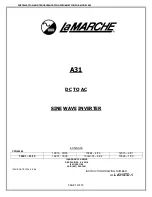
64
Settling of a control loop on a step change in input:
t
rise
: The rise time characterized by the first moment the reference input reaches the set
value.
t
settle
: Settling time, time that elapses before the new settled final state is reached. This is
deem reached when the controlled variable disappears within the tolerance band x.
x: e.g. 2% of the step change in the reference variable.
The overshoot o is stated as a percentage of the total step change in the reference variable.
Optimization of the PI controller according to the absolute value optimum
The absolute value optimum is used if there is no integral-action element in the controlled
system. Approximation of the absolute value of the frequency response to the optimum value
1 is performed for the largest possible frequency range.
If, among multiple small lag elements in the controlled system, there is one that has a greater
time constant (e.g. the armature time constant of the motor in relation to the current
controller) than the sum of all the other lag elements, this time large time constant must be
compensated for to speed up the control process. To avoid a static control error, the
controller must have an integral character. To achieve compensation of the large lag using
the integral-action controller, a proportional action is required in addition.
To compensate for the large time constant T1 it is necessary for the reset time Tn of the
controller to correspond to this T1. Reset time Tn = T1
The Kp of the control is calculated from Kp = T1 / (2 * Vs * ).
Vs is the controlled-system gain and is the sum of the small time constants of the lag
elements.
The rise time is t
rise
= 4.7 * ; the settling time is t
settle
= 8.4 * for a x of 2%.
The overshoot is 4.3%.
If, not one but two especially large lag elements are in a series of the first-order lag, a
proportional-plus-integral-plus-derivative-action controller, i.e. a PID controller, is more
suitable. The reset time Tn must always be set to the the larger time T1 of the two; Tv, to the
smaller time constant T2 in the control loop.
Tn = T1, Tv = T2, Kp = T1 / (2 * Vs * ).
The frequency response of the PID controller is: F(p) = Kp * (1+p*Tn) * (1+p*Tv) / (p*Tn)
Because 2 larger time constants are compensated for, the remaining is smaller, meaning
that faster rise times can be achieved.
t
ris
t
ris
t
settl
















































